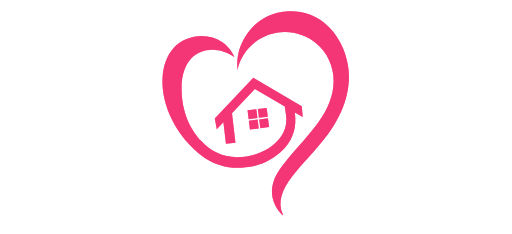Buccal fat removal has taken the aesthetic world by storm, especially with the rise of chiseled jawlines and sculpted cheekbones dominating both celebrity selfies and your Instagram feed. But what exactly is this trending cosmetic procedure, and more importantly—should you consider it? Whether you’re curious about how it works, want to see buccal fat removal before and after transformations, or are simply wondering if you’d make a good candidate, this guide will give you expert-backed insights into everything you need to know.

What Is Buccal Fat Removal and How Does It Work?
Have you ever looked in the mirror and felt your lower cheeks made your face look rounder than you’d like—despite diet and exercise? That fullness is often due to a natural fat pad called the buccal fat pad, which sits between your cheekbones and jawline. During buccal fat removal, a cosmetic surgeon makes a small incision inside your mouth and gently removes a portion of this fat pad. The result? A more contoured, “snatched” facial structure—think high cheekbones and a defined jawline that wouldn’t look out of place on a fashion runway.
Unlike procedures like a facelift or neck lift, buccal fat removal doesn’t involve any external scarring or skin tightening. It’s a targeted fat reduction technique that delivers subtle yet striking results. It’s commonly performed in conjunction with procedures like a chin implant for an even more dramatic facial transformation.
Who Are the Best Candidates for Buccal Fat Removal?
Is Buccal Fat Removal Right for You?
If you’re someone with naturally fuller or rounder cheeks and you desire a more angular face, this procedure might be ideal. Typically, younger adults—aged between 20 and 40—who are not significantly overweight and have good skin elasticity are excellent candidates. However, it’s not a one-size-fits-all solution. If you already have a narrow or angular face, removing buccal fat could lead to a gaunt appearance over time, especially as you age and naturally lose facial volume.
Consulting with a board-certified plastic surgeon who has real buccal fat removal before and after results to show is essential. A trusted specialist will assess your bone structure, fat distribution, and long-term aesthetic goals to help determine if this procedure will enhance your features—or if alternatives like a facelift or chin implant would be better suited.
Why Are Celebrities Obsessed With Buccal Fat Removal?
Buccal Fat Removal Celebrities: The Look Behind the Fame
From Hollywood red carpets to high-fashion catwalks, many A-listers owe their sharp cheekbones to this discreet but effective procedure. Although most celebrities stay quiet about their cosmetic enhancements, fans and experts have speculated that stars like Bella Hadid, Zoe Kravitz, and Lea Michele may have benefited from buccal fat removal—contributing to the procedure’s viral fame.
With social media fueling unrealistic beauty standards and the “Instagram Face” aesthetic dominating the digital world, it’s no surprise that the demand for this sculpting technique is on the rise. However, it’s crucial to remember that celebrity results are often a combination of multiple treatments—like neck lifts, dermal fillers, and yes, a whole team of makeup artists.
Buccal Fat Removal Cost: What Should You Expect?
How Much Does Buccal Fat Removal Cost?
One of the most frequently asked questions is: How much does buccal fat removal cost? While pricing can vary depending on the surgeon’s experience and your location, the average cost in the U.S. ranges from $2,000 to $5,000. This typically includes surgeon fees, anesthesia, and facility charges.
Some clinics offer package deals if you’re combining buccal fat removal with other procedures such as a chin implant or neck lift. While cheaper options may exist abroad or at lesser-known clinics, your face is not the place to cut corners—always prioritize board certification and patient reviews.
To get a tailored quote, consider using medical platforms like Wupdoc that connect you with top-rated aesthetic clinics offering competitive pricing, verified reviews, and even virtual consultations.
What Is the Recovery Process Like?
The recovery for buccal fat removal is generally smooth and relatively quick. Since the incision is inside the mouth, there are no visible scars. Most patients experience mild swelling, tightness, and tenderness for about a week. You’ll be on a soft-food diet temporarily, and rinsing your mouth regularly helps prevent infection. Full results begin to show in 2–4 months as swelling subsides and the contours refine.
Many patients compare it to having their wisdom teeth removed—it’s mildly uncomfortable but manageable. Best of all, the results are permanent. Once the fat pad is removed, it doesn’t grow back.
Is Buccal Fat Removal Safe and Worth It?
What Are the Risks and Long-Term Considerations?
Like any surgical procedure, buccal fat removal carries some risks—bleeding, infection, nerve damage, or asymmetry. However, when performed by a skilled plastic surgeon, these risks are minimal. What you should consider more seriously is how the procedure will affect your appearance in the long term. As we age, we naturally lose volume in our face. Removing too much buccal fat now might accelerate signs of aging later, potentially requiring treatments like a facelift down the line.
This is why many experts stress the importance of conservative fat removal and combining the procedure with long-term aesthetic planning.
Is Buccal Fat Removal Your Path to a Sculpted Face?
In the world of aesthetic enhancements, buccal fat removal offers a quick, effective route to a refined, model-like facial contour. Whether you’re intrigued by the transformation of celebrities’s bichectomy, inspired by before and after pictures, or just curious about the potential cost, the key to a successful outcome lies in personalized evaluation and expert guidance.
Before making any decisions, consult a qualified surgeon, review real patient photos, and think long-term. Sculpting the perfect face isn’t about chasing trends—it’s about enhancing your natural features with precision and care.



